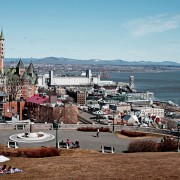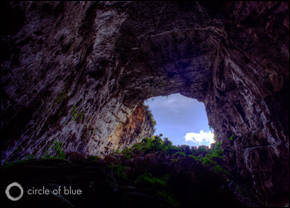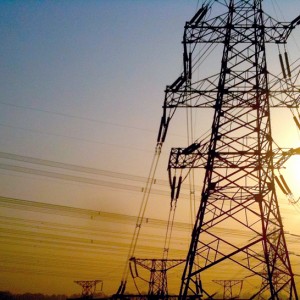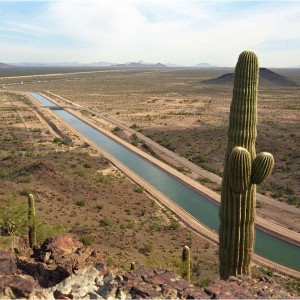Peter Gleick: Peak Water
Peak water is coming. In some places, peak water is here.
We’re never going to run out of water — water is a renewable natural resource (mostly). But increasingly, around the world, in the U.S., and locally, we are running up against peak water limits. The concept is so important and relevant that The New York Times chose the term “peak water” as one of its 33 “Words of the Year” for 2010 (along with “refudiate,” “top kill,” and “vuvuzela”), a term that a colleague and I defined in a new research paper in May in the Proceedings of the National Academy of Sciences (available here).
Water Number: Three (3) definitions of “peak water.”
Peak Renewable Water: This is the limit reached when humans take the entire renewable flow of a river or stream for our use. Water is renewable, but there is a limit to how much can be used. Humans have already reached “peak renewable water” limits on the Colorado River. We use it all and can’t take any more. In fact, of course, we probably shouldn’t even take as much as we do, for ecological reasons (see “Peak Ecological Water” below).
Increasingly, we are reaching peak renewable limits on many of our rivers and streams. The Yellow River in China no longer reaches the sea much of the year. The Aral Sea has been devastated because the entire flows of the Amu and Syr Darya rivers have been consumed. The Nile Delta is typically dry much of the year.
Peak Non-Renewable Water: While much of our water supply is renewable, there are “non-renewable” water sources as well, where our use of water depletes or degrades the source. This most typically takes the form of groundwater aquifers that we pump out faster than nature recharges them — exactly like the concept of “peak oil.” Over time, groundwater becomes depleted, more expensive to tap, or effectively exhausted. Central Valley aquifers are overpumped, unsustainably, to the tune of 1-to-2 million acre-feet a year. So are groundwater aquifers in India, China, the Great Plains, and other places. This cannot continue indefinitely — it runs into peak non-renewable water limits.
Peak Ecological Water: The third definition, and perhaps the most important (and difficult) one, is peak “ecological” water — the point where any additional human uses cause more harm (economic, ecological, or social) than benefit. We’re good at measuring the “benefits” of more human use of water (semiconductors manufactured, or food produced, or economic value generated), but we’re bad at measuring on an equal footing, the ecological “costs” or harm caused by that same use of water. As a result, species are driven to extinction, habitat is destroyed, water purification capabilities of marshes and wetlands are lost. For many watersheds around the world, we are reaching, or exceeding, the point of “peak ecological water.”
California as a whole may not have quite reached peak water, but parts of California and some of our water systems are long past the point of peak water, in all three definitions of the term. We’ve done a great job in this state at capturing, storing, moving, and using water. But there are limits — an idea still lost on some of our policymakers, such as those who recently lamented our inability to capture and use every drop of water that fell in the recent extreme storms — a 19th century notion long ago overwhelmed and overtaken by physical, economic, and environmental realities. Large new surface water storage is simply not going to happen (though California could do far more with smarter flood-control projects and improved groundwater storage, as I described in a recent Sacramento Bee op-ed. This is a topic for another post).
Many of our groundwater basins are past the point of peak ecological water. The Sacramento-San Joaquin river systems, at some times of the year, are past the point of peak renewable water and peak ecological water because of the devastating ecological impacts of our water use on wetlands, migrating birds, fisheries, aquatic flora, and more. Our water rights allocations from the State and Federal projects exceed peak water limits because they promise more water to users than can ever be delivered.
We struggle from one year to the next, hoping for rain. We refuse to measure and monitor all of our water uses in a system with limits. We shy away from needed conversations about water use priorities and rights. As a result, we’re racing toward peak water limits and we can no longer afford to pretend all the water we want will be available, when we want it, at a cheap price, without consequences. A wet December and January doesn’t change that reality.











Comments are closed.